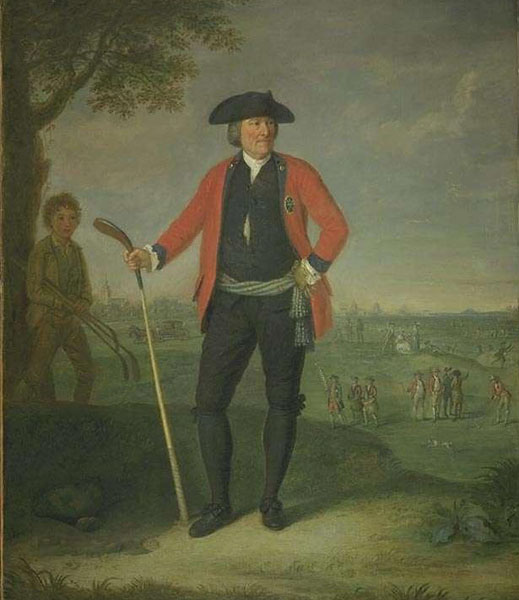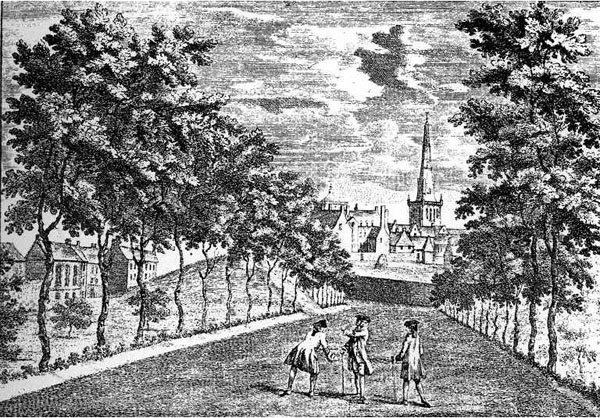Fashions change in sport as in everything else. Hawking and cock-fighting declined in popularity during the eighteenth century, while shooting increased. Other eighteenth century sports included curling and archery. Some towns laid out bowling greens, some developed natural golf links.

Portrait by David Allan (1744-1796) of
William Inglis,
Captain of the Honourable Company of Edinburgh Golfers,
1787.
© SCRAN/Scottish
National Portrait Gallery
Horse races had been an annual event in
many seventeenth century Scottish towns, such as Banff, Dumfries, Jedburgh,
Lanark and Stirling. Racing had gone out of fashion in many such places
by the mid eighteenth century, but was revived, controlled by and for
the elite, in the 1790s, both in traditional centres and in new ones such
as Montrose. Formal courses were laid out, some with stands, the finest
being at Kelso (and still in use). The holding of races is one of the
indicators of a regional centre or leisure town. Fox hunting was less
popular than in England, but there were a few subscription packs of hounds
set up in the early nineteenth century.

The Middle Walk, College
Garden, University of Glasgow, 1762.
©
SCRAN/University of Glasgow
Those who did not have to walk to work developed
walking as a leisure pursuit. Large gardens were designed with gravel
walks where exercise could be taken in all but the wettest weather. But
there were also public walks, or ‘promenades’, laid out in
attractive areas in or near towns. Examples include the Back Walk at Stirling,
first laid out in 1723, and the Mote Hill at Cupar.
| Next | ||